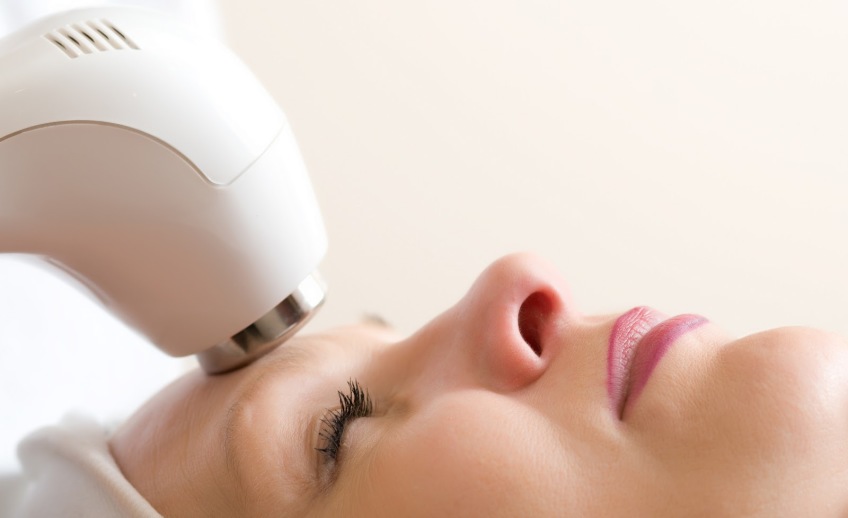Food and Drug Administration (FDA) approved
Indications of laser in dermatology include hair reduction, vascular lesions, pigmented lesions, lipolysis/ cellulite, stretch marks, and photorejuvenation (Fractional photothermolysis (Fraxel) is a new technology showing promise in this setting 1520–1580 nm)
Contraindications of laser therapy include viral or bacterial infection, sunburn, suntan, artificial tanners, and pregnancy (relatively).
Laser Hair Reduction
How does it work?
Laser is used for reduction of hair by extended theory of selective photothermolysis, laser beam destroys selective target (stem cell of the ismuth & possibly blood vessels in the papilla) by heat generated in the absorber chromophore (melanin in the hair shaft and matrix cells)Factors involved in photoepilation are body site, hair depth, follicle density, anagen/ telogen phase, hair color, and hair coarseness. Hair is most efficiently targeted in the anagen phase where the maximal amount of the target chromophore melanin is present.
Is it permanent?
Laser doesn’t give permanent hair removal, but you can get permanent hair reduction after 5-7 sessions at monthly intervals followed by 1-2 sessions/ year to maintain the result.
Complications
Generally laser hair reduction is very safe with very low incidence of side effects, and can be used at any age. But immediate pain, hyperpigmentation (10 – 15%, transient, resolves in 2-3 months), hypopigmentation (5%, transient, resolves within 2 months) or scarring (<1%) may occur especially in dark skinned individuals.
The chromophore is melanin in both the epidermis and hair. Dark-skinned patients with high epidermal melanin content are prone to adverse effects. So, to minimize unwanted adverse effects and for optimal results, the ideal candidate for laser hair removal is a light-skinned individual with dark terminal hair. In addition, effective epidermal cooling, the wavelength, the pulse duration of the used laser and the type of laser itself are of great importance. Post treatment measures to side effects include using of sun screen for 3-6 months after the end of last session, topical antibiotic, and bleaching agent whenever indicated.
Laser skin rejuvenation
Nonablative rejuvenation uses lasers and intense pulsed light sources, which improve aging parameters without disrupting cutaneous integrity, minimal downtime, and low-risk profile.
Fractional Non-Ablative (Fraxel) Fraxel Creates Microscopic Treatment Zones of thermal injury (MTZs) leading to formation of isolated micro thermal wounds creating necrotic zones surrounded by zones of normal tissue resulting in fast epidermal repairing. CAP technology; produces varying levels of heat distribution in the skin, apex pulses create high intensity lesions remodeling collagen & low level heating surrounds the apex pulses creating collagen stimulation.
Side Effects
Typical immediate effects of Treatment are urticaria, erythema, and edema which resolve within 24 hours. But the true adverse effects including pain, cooling and local anesthesia are still required, and hyperpigmentation.
Laser for treatment of cellulites
Laser is safely used from outside to treat cellulites with no reported side effects, but it is relatively contraindicated during pregnancy and it is not recommended to be used on abdomen during menses because it may increase bleeding. The laser session takes around half an hour depending on treatment area, the number of sessions depends also on the area to be treated and the amount of fat. Sessions to be performed once or twice per week & patients feel the results from first session, they lose about 2-5 cm from the diameter of treatment region just after the session and continue losing fat in the next few days after the session.

